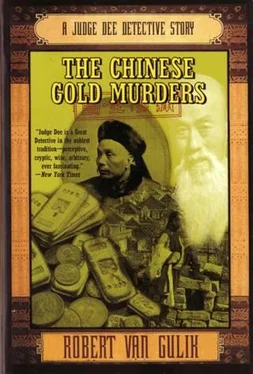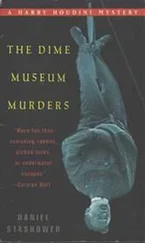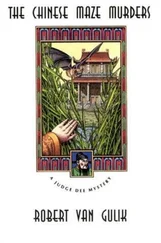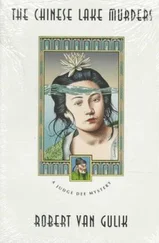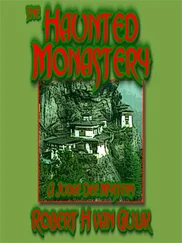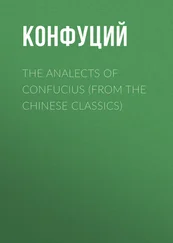The Korean element was suggested by Edwin O. Reischauer's stimulating study Ennin's Travels in T'ang China (New York, 1955). He brought to light, on the basis of the travel diary of a Japanese monk who visited China in the ninth century, the great importance of Korean shipping to T'ang Chinai and the existence of Korean settlements on the northeast coast which practically enjoyed extraterritoriality. The same source also proves how highly developed the Chinese bureaucratic system was already in the T'ang period. Travelers were checked and searched at frequent intervals along the highways, and one needed numerous official documents before one could move from one place to another.
The cases of the Bolting Bride and the Butchered Bully are based upon an occurrence described in the Ku-chin-ch'i-an-wei-pien (Shanghai, 19Z1), where in the seventh chapter a number of old cases are collected under the heading Wu-sha-ch'i-an "Curious Cases of Murder by Mistake." There it is said that the woman was wounded only slightly, and fled after the murderer had left, which doesn't sound very convincing. Therefore I introduced the element of the sickle, and rewrote the tale so as to fit in with the smuggling plot.
Ghosts and were-animals figure largely in Chinese fiction. Those interested in these occult subjects will find copious data in H. A. Giles, Strange Stories from a Chinese Studio (first edition: London, 1880; American edition: New York, 1925). Tigers still occur in fair numbers in Manchuria, and in the southern provinces of China. But Marco Polo tells us that in former times they occurred also in the northern provinces and often made traveling unsafe in those parts.
The progressive thoughts on the position of women voiced by judge Dee in Chapter XV of the present novel are not as anachronistic as they would seem. Since early times there have been Chinese writers who broke a lance for women and protested against masculine ethicsalthough it must be admitted that until the great movement for the emancipation of women initiated after the establishment of the Chinese Republic in 1912, those progressive views were not very favorably received by the general public. Cf., Lin Yü-t'ang's interesting essay "Feminist Thought in Ancient China," in his book Confucius Saw Nancy and Essays about Nothing (Commcrcial Press, Shanghai, 1936).
The third theater piece described in Chapter XVI, about the unequally divided property, I borrowed from the old casebook T'ang-yinpi-shih; there the solution is ascribed to the famous eleventh century imperial counsellor Chang Ch'i-hsien (Case 55-B). The entire casebook was published by me in English translation under the title T'angyin-pi-shih, Parallel Cases from under the Pear Tree, a 13th century manual of jurisprudence and detection (Sinica Leidensia Series, Volume X, Leiden, 1956).
Just as in the other volumes of judge Dee Mysteries, here also I tried to show on the illustrations aspects of Chinese domestic life that did not yet appear in the others. Thus in this volume the reader will find a picture of a simple bed (Chiao Tai on the flower boat), of a more elaborate bedstead (Tang's death) and of a Chinese smelt oven with a pair of bellows (judge Dee in the temple). This time also I modeled these pictures after Ming-dynasty book illustrations, and the naked women after erotic albums of the same period. It should be noted that ancient Chinese sexual taboos differ from ours in that while our classical fig leaf would have been completely incomprehensible to them, they objected very strongly to picturing the uncovered feet of women, which they considered as highly indecent. Although in recent years this view is becoming dated, I still thought it wise to conceal the naked feet of the women depicted in my novels, with a view to the Chinese-language versions of the series.
ROBERT VAN GULIK
About the Author
Robert van Gulik was born in the Netherlands in 1910. He was educated at the Universities of Leyden and Utrecht, and served in the Dutch diplomatic service in China and Japan for many years. His interest in Asian languages and art led him to the discovery of Chinese detective novels and to the historical character of Judge Dee, famous in ancient Chinese annals as a scholar-magistrate. Van Gulik subsequently began writing the Judge Dce series of novels that have so captivated mystery readers ever since. He died of cancer in 1967.
***

[1] Then the Tang Emperor Kao-tsung (64ß-683) had just succeeded in establishing Chinese suzerainty over the greater part of Korea. According to the chronology of judge Dee Mysteries, Judge Dee arrived in Peng-lai in the summer of A.D. 663. [1] During the successful Chinese Korea campaign in the autumn of the preceding year, when they defeated the combined Korean-Japanese forces, the girl Yü-soo had been carried away as a war slave. Chiao Tai had taken part in the previous campaign of 661 as a captain over hundred. The reader will find a pictorial map of Peng-lai in the front of the book, and in the Postscript information on the ancient Chinese judicial system, taken over, with a few changes, from the preceding volume of the series, together with an account of the Chinese sources utilized. ROBERT VAN GULIK
In the year 665 Judge Dee was transferred from Peng-lai to Hanyuan, and thence in 658 to Poo-yang in Kiangsu Province. In 670 he was appointed to the magistracy of Lan-fang, on the western frontier, where he stayed five vears. In 676 he was transferred to Pei-chow in the far north, where he solved his last three cases as district magistrate. In the same year he was appointed President of the Metropolitan Court of justice, in the Imperial Capital.
